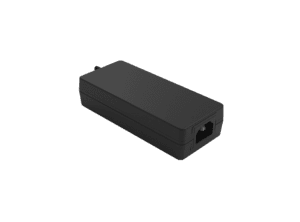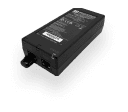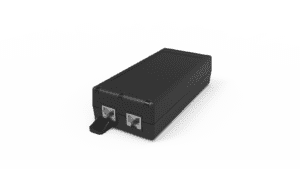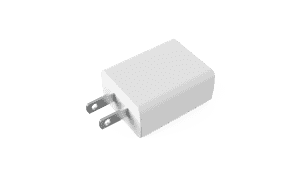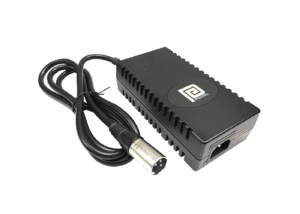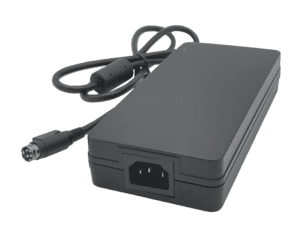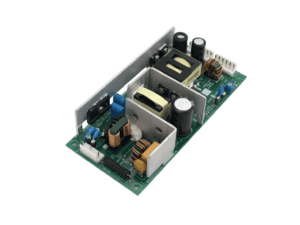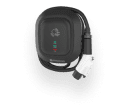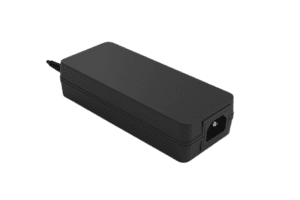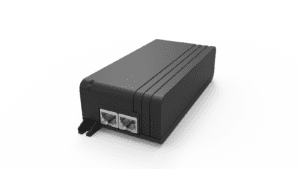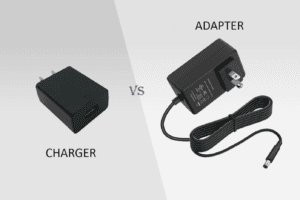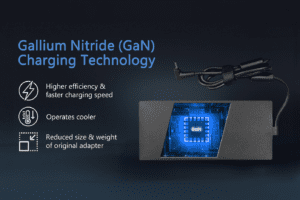BLOG
EV Charging Station Solutions: How OEMs Can Engineer Rugged, High-Uptime Chargers for Public and Commercial Use
Table of contents
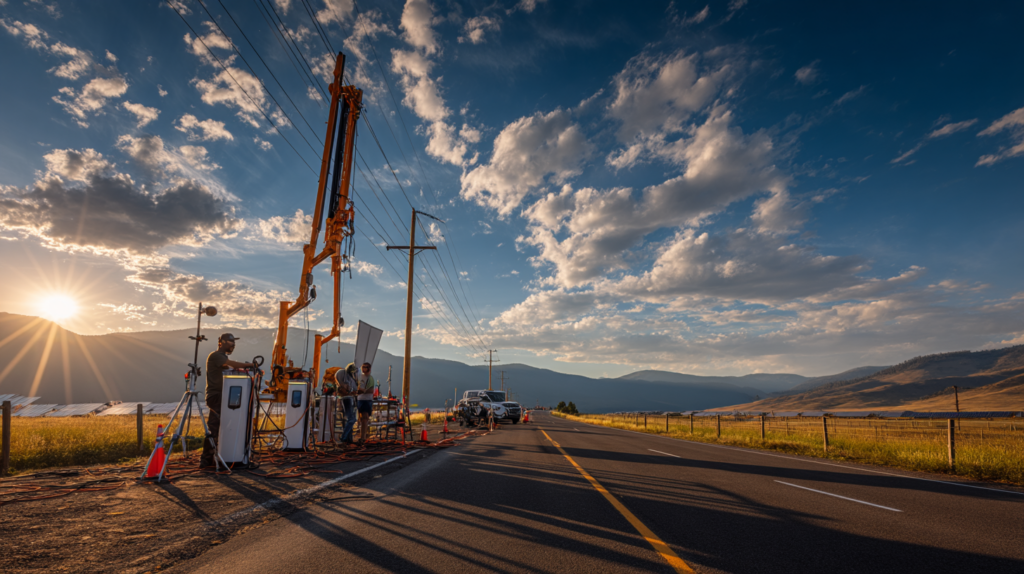
Why Do Public and Commercial EV Charging Stations Need Rugged Engineering?
Unlike residential charging systems, public and commercial EV charging stations are exposed to harsh environments, frequent use, and diverse user behavior. Whether it’s a city-owned parking lot, a retail center, or a commercial fleet depot, EV chargers must perform reliably under continuous operation—often outdoors and without supervision.
Rugged engineering ensures that chargers can withstand extreme temperatures, weather conditions, vandalism, and repeated plug-ins without degradation. For OEMs, this means designing not just for electrical performance, but for durability, uptime, and serviceability.
Top Features
- NEMA 3R or 4X Enclosures: Weatherproof designs suitable for rain, snow, dust, and UV exposure
- Tamper-Resistant Hardware: Secure housings and cable systems that deter vandalism and misuse
- High-Cycle Connectors and Cables: Rated for thousands of charge sessions without failure
Top Benefits
- Increased reliability in unattended, high-traffic locations
- Reduced maintenance and replacement costs
- Improved user experience and public trust in charging availability
Best Practices
- Use industrial-grade connectors and impact-resistant enclosures
- Design for IP54+ and IK10 protection where public access is expected
- Consider passive or active cooling for high-power units deployed in hot regions
In rugged public environments, EV charger performance depends on more than just voltage—it’s about surviving the real world.
How OEMs Can Maximize Uptime in High-Traffic Charging Locations
Public and commercial chargers are only valuable when they’re operational. High uptime is critical for revenue, user trust, and network efficiency. A charger that’s offline due to overheating, connection errors, or firmware failures can create frustration—and financial loss.
OEMs must build uptime into their charger architecture with thermal management, proactive diagnostics, and remote service capabilities. Smart firmware paired with industrial-grade hardware ensures minimal downtime and fast recovery from issues.
Top Features
- Remote Monitoring and Diagnostics: Alerts operators before small issues become failures
- Redundant Power and Communication Paths: Avoids single points of failure
- Over-the-Air (OTA) Firmware Updates: Fixes bugs and enhances features without physical access
Top Benefits
- Fewer site visits and lower maintenance costs
- Better user experience and reliability perception
- Continuous improvement through software innovation
Best Practices
- Choose hardware that integrates with backend uptime dashboards
- Build systems with self-rebooting logic for network or thermal faults
- Validate performance in temperature extremes and poor network conditions
Charger uptime is a competitive metric—OEMs that engineer for it earn long-term trust and repeat deployments.
What Design Elements Contribute to Long-Term Durability?
Designing for durability means thinking beyond basic specs. Every component—from casing material to PCB layout—affects how well a charger holds up in real-world conditions. For public and commercial applications, durability is non-negotiable.
OEMs should use proven design strategies such as reinforced casings, modular components, and simplified maintenance access. Materials and layout should be chosen not just for cost—but for lifecycle longevity and repairability.
Top Features
- Reinforced Housings with UV Protection: Prevent cracking, discoloration, or brittleness over time
- Modular Internal Layouts: Allows easier replacement of damaged or worn subsystems
- Cable Management Systems: Prevents tangling, wear, and tripping hazards
Top Benefits
- Extends charger service life in outdoor and fleet environments
- Reduces field repair complexity and service times
- Lowers total cost of ownership (TCO) for commercial deployments
Best Practices
- Use stainless steel or powder-coated aluminum enclosures for rust resistance
- Design cable holsters and strain relief systems into the pedestal
- Build internal layouts for quick-swap access during scheduled maintenance
Durability isn’t just about protection—it’s about smart, serviceable engineering that extends performance year after year.
CLIENT'S QUOTE
"Phihong’s PoE solutions have made a huge difference for us! Our network runs more efficiently, and we’ve seen real cost savings. We couldn’t be happier!"
How to Engineer EV Chargers for Extreme Climates and Outdoor Installations
From desert heat to freezing winters, public and commercial EV charging stations are expected to operate in all conditions. Engineering for climate resilience is a critical priority for OEMs building chargers that must perform outdoors year-round without failures.
Design elements like wide operating temperature ranges, internal heating or cooling components, and corrosion-resistant materials all contribute to a charger’s ability to withstand the environment. Thermal efficiency, enclosure sealing, and ventilation design also play major roles in long-term performance.
Top Features
- Wide Operating Temperature Range: Chargers rated for –30°C to +50°C operation or wider
- Humidity and Salt Fog Protection: Necessary for coastal and high-moisture environments
- Built-In Heating or Cooling Modules: Thermostatically controlled for harsh environments
Top Benefits
- Ensures continuous operation in extreme hot or cold locations
- Reduces weather-related service interruptions
- Expands deployment opportunities across geographic regions
Best Practices
- Select components with automotive-grade temperature and moisture ratings
- Integrate heating elements or cooling fans where passive systems won’t suffice
- Test enclosures for thermal cycling and ingress protection (IP54, IP65, or higher)
Climate resilience adds long-term value to EVSE hardware, especially in global public deployments and outdoor commercial use.
Why Cable Design and User Interface Matter in Public EV Charging
For public and shared-use environments, user experience can make or break adoption. Cable design, display clarity, and physical ergonomics directly impact how easily drivers interact with the charging station—and whether they’ll return to use it again.
Poorly designed cables that tangle, drag on the ground, or break easily can lead to damaged equipment and increased service calls. Likewise, non-intuitive screens or inaccessible controls can frustrate users and slow station throughput.
Top Features
- Retractable or Overhead Cable Management: Prevents tangling and wear
- Large, Sunlight-Readable Displays: Helps users follow steps quickly, even outdoors
- Accessible Mounting Heights: Meets ADA standards and supports universal usability
Top Benefits
- Improves daily usability for all drivers
- Reduces physical strain and accidental cable damage
- Decreases need for on-site staff intervention or help desk calls
Best Practices
- Include intuitive visual cues and universal icons on interface screens
- Use spring-loaded or swing-arm cable holders to avoid slack and sag
- Ensure the interface is legible in bright sunlight and at night
User experience should be a core part of rugged engineering—durable doesn’t have to mean difficult.
How Phihong USA Helps OEMs Build Rugged, High-Uptime EV Charging Solutions
Phihong USA, in collaboration with Zerova Technologies, specializes in the development and manufacturing of commercial-grade EV charging stations engineered for high uptime, extreme environments, and public use.
With decades of experience in power supply manufacturing and infrastructure solutions, Phihong supports OEMs in building chargers that are weather-resistant, service-friendly, and field-proven. Our designs meet UL 2594 and other key safety standards while integrating advanced features like OCPP, remote monitoring, and thermal control.
Phihong offers:
- Outdoor-rated Level 2 and DC fast chargers for public infrastructure
- Modular enclosures and rugged cabling for repeated high-traffic use
- Pre-compliance testing and certification support for UL, CE, and FCC
- Design-for-maintenance engineering to reduce service time and costs
Whether you’re launching a new public charging line or scaling commercial deployments, Phihong helps OEMs design for durability, scale for volume, and deliver dependable EV charging anywhere.
Let’s build something that lasts.
Start your rugged EV charging project today at www.phihong.com or contact sales@phihongusa.com.

Contact Our Team Today!
Our dedicated sales team and international partners are prepared to support you with your latest projects and initiatives globally.
Explore More with Phihong USA
As we conclude our exploration of PoE technology, it’s evident how these innovations are streamlining power and data integration across various industries. Phihong USA stands at the forefront of this technological advancement, offering a diverse range of power solutions designed to meet the evolving needs of modern industries.
Phihong USA’s extensive product lineup includes:
- Power over Ethernet (PoE) Solutions: Delivering reliable power and data transmission over a single cable, ideal for simplifying network installations and reducing costs.
- AC/DC Adapters and Power Supplies: From compact adapters to industrial-grade power supplies, Phihong provides solutions that ensure efficiency and reliability in various applications.
- Battery Chargers: Customizable chargers for lithium-ion and lead-acid batteries, supporting a wide range of power requirements for mobility and industrial applications.
- Medical Power Supplies: Specialized power solutions designed to meet the stringent requirements of the healthcare industry, ensuring safety and reliability.
Phihong USA is committed to innovation and excellence, continually developing products that meet the highest standards of performance and reliability. Their global reach and dedication to customer support make them a trusted partner in powering the future.
Here are some useful links to explore Phihong USA’s offerings further and bring in new potential clients:
Visit Phihong USA to discover how their advanced power solutions can support your business needs. Whether you’re looking to upgrade your network, or find reliable power supplies, Phihong USA has you covered.
By choosing Phihong USA, you’re partnering with a leader in power technology, ensuring your operations run smoothly and efficiently with top-tier power solutions. Contact Us today!
FAQ
What makes an EV charging station “rugged” and why is this important for public and commercial use?
A rugged EV charging station is specifically designed to withstand the environmental and operational challenges of public or commercial deployment. Unlike residential units, these chargers must handle continuous usage, exposure to the elements, and potential physical tampering—all without compromising performance or safety.
Key characteristics of rugged chargers include:
- NEMA 3R or NEMA 4 enclosures that protect internal electronics from dust, rain, snow, and vandalism
- Industrial-grade connectors capable of thousands of plug/unplug cycles
- Tamper-resistant screws, secure cable holsters, and anti-vandalism hardware
- Wide operating temperature tolerance for extreme climates, including deserts and freezing regions
In public settings—like city parking, shopping centers, and transit hubs—rugged construction is essential to ensuring uptime and protecting investments. For commercial operators, rugged EVSE reduces the frequency of repairs, minimizes operational disruption, and delivers a more reliable experience to end users.
OEMs building for this market must prioritize durability at every level of the design process, from enclosure materials and mounting hardware to firmware resilience and self-recovery logic. Rugged doesn’t just mean strong—it means dependable, serviceable, and ready for the demands of real-world usage.
How can OEMs ensure high uptime for commercial EV charging stations?
High uptime is critical in commercial EV charging because availability directly impacts customer satisfaction, operational efficiency, and revenue. When a charger is down, it not only affects the user—it reflects poorly on the brand and can disrupt entire fleet operations.
To ensure high uptime, OEMs must combine robust hardware engineering with smart system design. This includes:
- Thermal management systems (passive or active) that prevent overheating or freezing
- Redundant communication modules (e.g., cellular + Ethernet) to maintain backend connectivity
- Self-recovery firmware that reboots or resets the charger after power glitches
- Remote monitoring tools that alert operators before issues cause full downtime
Smart diagnostics play a crucial role as well. Chargers equipped with onboard sensors and cloud connectivity can detect anomalies (e.g., failed handshake, cable disconnect, overcurrent events) and notify maintenance crews in real time. Over-the-air updates further reduce the need for on-site service, keeping software current and stable.
Ultimately, OEMs should design chargers for autonomous reliability—engineering them not only to perform under ideal conditions, but to recover quickly and communicate proactively when things go wrong. Uptime isn’t just a product feature—it’s a business imperative in commercial EV charging networks.
What certifications and standards apply to rugged commercial EV chargers?
Commercial EV charging stations must meet a variety of certifications and regulatory standards to ensure they are safe, reliable, and legally installable in public spaces. These certifications vary by region but are essential for OEMs that plan to scale deployments across North America or globally.
In the U.S., the most common certifications include:
- UL 2594: Applies to EV supply equipment (EVSE), ensuring basic safety for residential and commercial applications
- UL 2231-1 and UL 2231-2: Provide personnel protection standards during charging
- FCC Part 15: Ensures that the charger does not cause harmful radio frequency interference
- NEC (National Electrical Code): Specifies installation practices and interconnection with local power grids
For rugged, outdoor-ready EV chargers, NEMA enclosure ratings (typically NEMA 3R or 4) and IP ratings (IP54 or higher) are also critical to demonstrate weather resistance and dust protection. OEMs that intend to sell globally may also need CE, IEC 61851, or RoHS compliance.
Working with an experienced manufacturer helps ensure these certifications are met early in the design phase. OEMs should also maintain strong documentation practices, track component traceability, and test prototypes in certified labs to avoid costly certification delays later in production.
Why is cable management such a big deal in public EV charger design?
Cable management may seem like a minor detail, but in public charging environments, it’s one of the most visible and commonly damaged components of the entire system. Poor cable design can lead to faster wear, safety hazards, and frustrated users. Well-engineered cable management significantly enhances durability, ease of use, and charger uptime.
For OEMs, key considerations include:
- Cable length and flexibility: Must be long enough to reach all vehicle types, yet not so long that it drags or tangles
- Strain relief and protective sheathing: Reduces mechanical stress at connection points
- Holsters or retractable systems: Prevent cables from lying on the ground where they can be run over or vandalized
In areas with snow, rain, or mud, unmanaged cables can become dangerous and degrade quickly. In high-traffic zones like transit hubs or shopping centers, tangled or broken cables can deter users and cause service disruptions.
A well-designed cable system not only protects the equipment—it protects the investment. OEMs that solve this detail elegantly gain favor with both operators and end-users. It’s not just about function—it’s about long-term usability, aesthetics, and minimizing site service calls.
How does Phihong USA support OEMs in building high-reliability, public-ready EV charging stations?
Phihong USA, along with its EVSE division Zerova Technologies, helps OEMs engineer and manufacture rugged, high-uptime charging solutions built for real-world deployment. Whether it’s an urban streetscape, a government fleet depot, or a private commercial lot, Phihong designs its products to perform in any condition.
Phihong supports OEMs with:
- UL 2594- and NEMA-rated Level 2 and DC fast chargers
- Weather-resistant enclosures tested for outdoor performance
- Durable cables and connector systems optimized for high usage
- Remote diagnostic tools and OTA firmware update capabilities
- Custom branding, backend compatibility (OCPP), and load management options
With decades of experience in power electronics and manufacturing, Phihong offers a streamlined path from prototype to production, ensuring chargers are not only reliable but also scalable. Their production capabilities allow OEMs to grow deployments confidently, with global supply chain support and regulatory compliance built into every unit.
Whether you’re upgrading an existing public charging network or launching a new product line, Phihong USA is ready to help OEMs deliver charging infrastructure that performs when and where it matters most.

